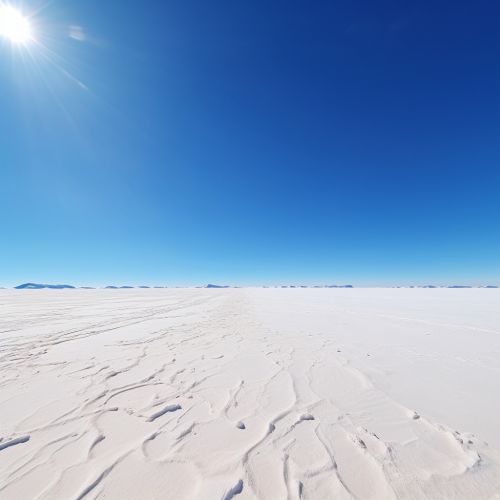Antarctic Desert
Introduction
The Antarctic Desert is the largest desert on Earth, spanning a vast area of about 5.5 million square miles. Despite its icy conditions, it qualifies as a desert due to its extremely low annual precipitation levels. This unique environment is home to a variety of organisms that have adapted to survive in its harsh conditions.
Geography
The Antarctic Desert covers the entire continent of Antarctica, extending to all areas south of the Antarctic Circle. It is surrounded by the Southern Ocean and is divided into two main regions: East Antarctica (Greater Antarctica) and West Antarctica (Lesser Antarctica).


Climate
The Antarctic Desert is characterized by its extremely cold temperatures, with the interior of the continent experiencing the coldest temperatures on Earth. The desert's climate is classified as a polar desert climate, characterized by strong winds, low precipitation, and sub-zero temperatures.
Flora and Fauna
Despite the harsh conditions, a variety of organisms have adapted to survive in the Antarctic Desert. These include several species of penguins, seals, and a variety of birds. The flora of the Antarctic Desert is limited, with only two species of flowering plants known to exist: the Antarctic hair grass and the Antarctic pearlwort.
Human Activity
Human activity in the Antarctic Desert is limited due to the harsh conditions and the restrictions imposed by the Antarctic Treaty System. However, the region is a significant site for scientific research, with numerous research stations established by various countries.
Conservation
The Antarctic Desert is protected by the Antarctic Treaty System, which prohibits military activity, mineral mining, nuclear testing, and nuclear waste disposal. It also supports scientific research and protects the continent's ecozone.
